Riga is a great place for tourists because there is always something to do in this city, which is the capital of Latvia. Here, guests of Riga will find many museums (with permanent and temporary exhibitions), theatres (for all tastes and generations), places to take a stroll, cafes, bars, and shops where you can buy local products and unique souvenirs.
These places can easily be found in any Riga travel guide, but the question that usually interests sophisticated tourists is what local residents do in Riga. We tried to collect information on the favourite places and things to do in Riga residents in one article to make it easier for you to feel like a “local” and understand the full flavour of typical life in Riga.
1. Āgenskalns (Agens hill) - Riga's Cherished Wooden Soul
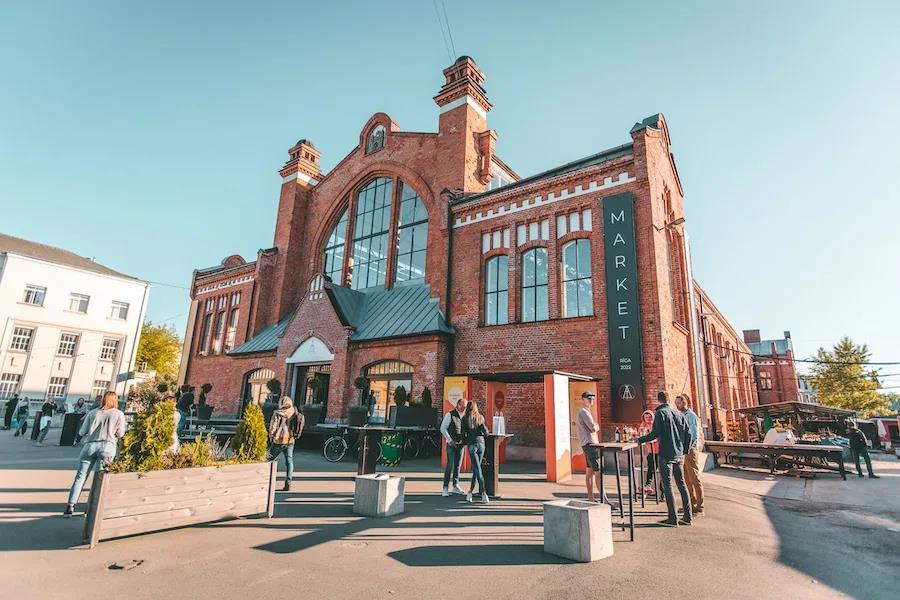
Āgenskalns market entrance (Source: LiveRiga photo gallery)
The name Āgenskalns carries with it a rich historical legacy, tracing its origins to the manor owned by Heinrich von Hagen, a prominent judge during the 17th century. This manor, once known as Švarcmuiža, served as the cradle of the district's unique heritage.
During the era of Russian Tsars, the district underwent a transformation, adopting the name "Hagensberg" from its German influences. Over time, "Hagensberg" evolved into the name Āgenskalns, which persists to this very day, encapsulating the district's enduring connection to its past.
The historic enclave on the left bank of Riga, known as Āgenskalns, lies just across the Daugava River from the Old Town, adding to its charm and allure. Over the years, the once-desolate riverbanks have undergone a transformation, giving rise to iconic structures. Notable landmarks include the towering Saules Akmens office building, the city's tallest, and the distinctive pyramid-shaped National Library. For those with a passion for architecture and an appreciation for ambiance, exploring the quieter streets of Āgenskalns may yield hidden gems of unrenovated wooden architecture.
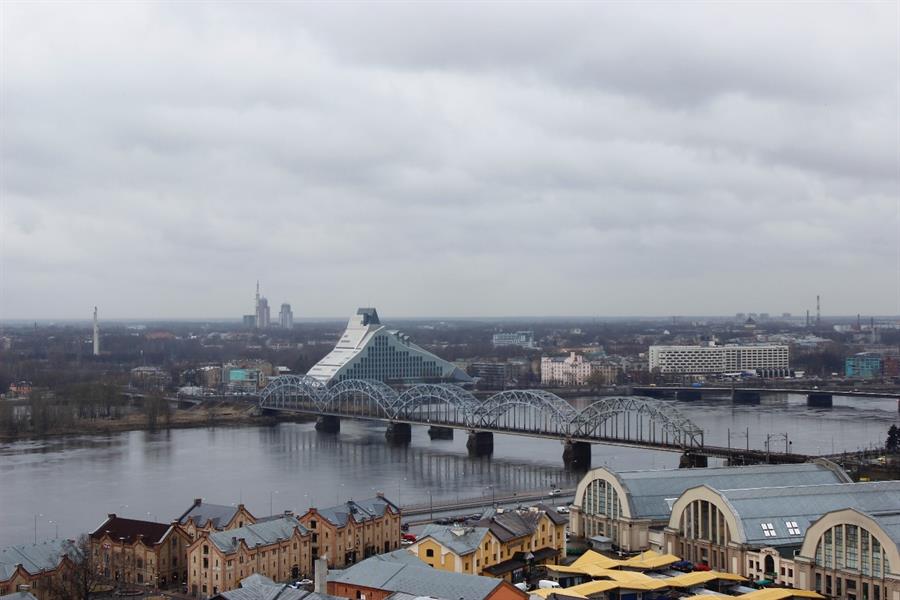
Panoramic view to the Daugava's right bank (Source: unsplash.com)
At the end of the week, citizens from all over Riga come to Āgenskalns. Āgenskalns Market has been the main gem of Āgenskalns for the last couple of years. The market itself was created and opened to the public back in 1898, but it underwent a major renovation in 2018, and in 2022, it opened in a new light not only for the residents of Āgenskalns but also for other Riga residents. Here you can buy fresh food to prepare a delicious dinner, and you can have lunch and enjoy a delicious alcoholic or non-alcoholic drink on the first floor. On the second floor of the market, there is a food court with cuisines for all tastes. Here you can taste American, Georgian, Ukrainian, and Spanish cuisine. Interesting events, exhibitions, and performances take place here. This is where locals spend their weekends with family and friends.
2. Imanta - One of the greenest and largest parts of the city
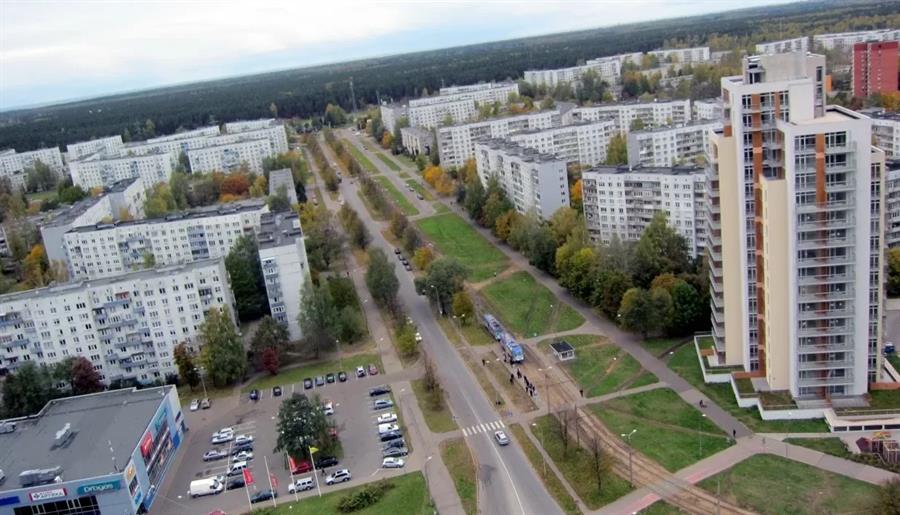
Bird's view to Imanta area (Source: imanta.lv photo gallery)
The name Imanta has its origins in Riga's industrial past - it was the name of an agricultural machinery factory established in 1913 by four Latvian craftsmen on the corner of Anniņmuižas Street (now Jūrmalas gatve) and Mazā Kandavas Street. Each member paid 500 roubles and set to work building the smallest agricultural machines. Imanta used to be called Imantciems and it is made up of 4 manor districts, Aniņmuža, Lielā and mazā Damme Manor and Zolitudes Manor.
Imanta is a charming residential district located in the western part of Riga. While it may not be as renowned as some of Riga's more touristy neighbourhoods, Imanta has its own unique appeal and offers a variety of attractions and activities. In 2022, the Imanta-Daugavgrīva cycle route started to be built, starting from Anniņmuižas Boulevard and running along Kleistu Street towards Daugavgrīva as a shared pedestrian and cycle route. Imanta is a peaceful and vibrant neighborhood that provides a quieter escape from the bustling city center while still offering a taste of Latvia's rich culture and natural beauty.
3. Andrejosta/Andrejsala/Pētersala - High-quality restaurants located alongside Daugava river bank
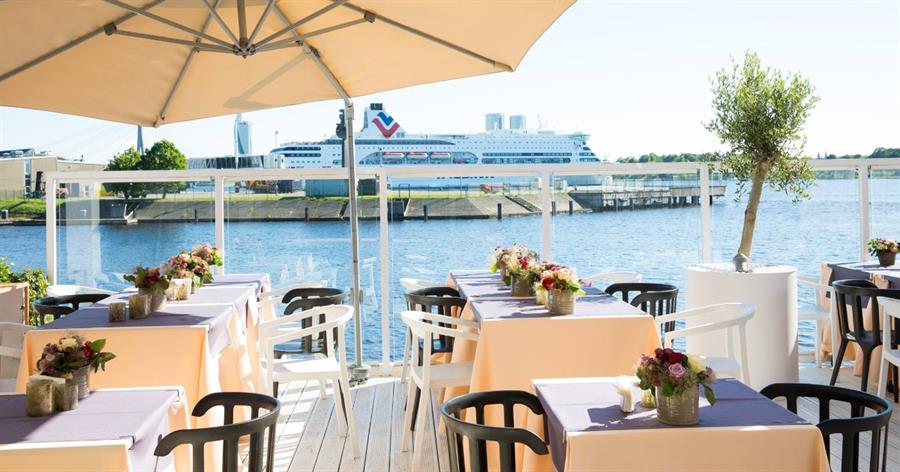
Restaurants at Andrejosta (Source: restoraniriga.lv)
Andrejosta is a delightful small gulf nestled on the right bank of the Daugava River, where the Riga Channel converges with the majestic Daugava. This picturesque locale not only boasts natural beauty but is also home to the thriving Riga Yacht Center. In 1901, the Russian government authorized the construction of an Export Port on Andrei Dam (now the Passenger Port). By 1902, the first cold storage facility was in operation in Andrejsala.
Closer to spring, when the sky becomes clear and the sun shines brighter, Andrejosta becomes one of the busiest neighbourhoods in Riga. It is a neighbourhood located near the Daugava where dozens of ships and yachts pass by. Here are the most beautiful sunsets and the most amazing views.
Locals usually take a leisurely stroll along Andrejosta or slowly cycle along it. And they often stop at the largest alcohol shop in Riga, Spirits & Wine, for their favourite alcoholic or non-alcoholic drink, and then, they usually sit in the embankment area and simply enjoy life at a leisurely pace. The shop itself is more like a modern exhibition hall where, closer to summer, a terrace is opened on which you can enjoy drinks and the leisurely movement of ships towards the port.
4. Centrs (The City Centre/Old Town) - Included in the UNESCO world heritage site
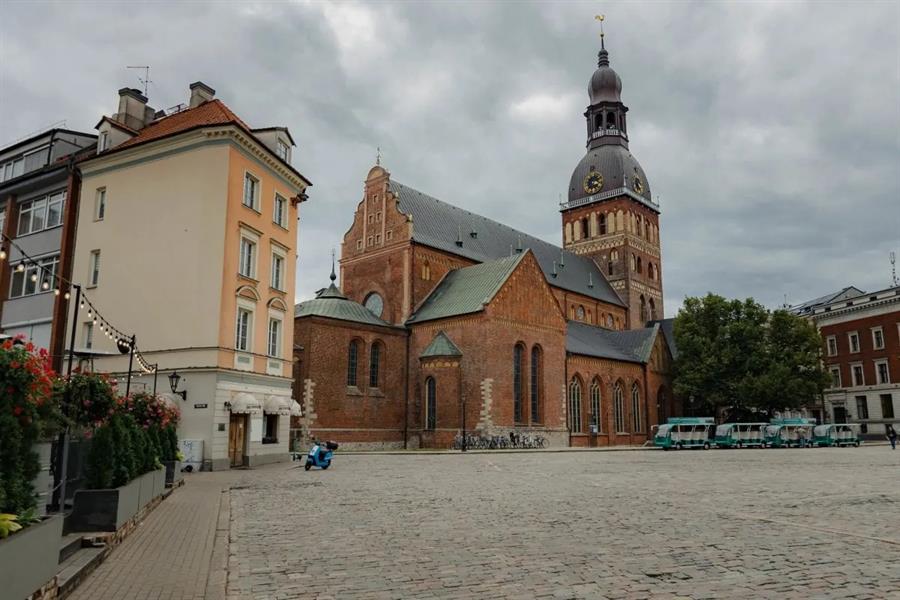
Riga Old Town - Dome square (Source: LiveRiga photo gallery)
Riga's Old Town is a treasure trove of diverse architecture, boasting cultural monuments that span Romanesque, Gothic, Baroque, Classical, and Modernist styles. Many of these historic buildings were lovingly restored following Latvia's independence. Notable landmarks include the Cathedral Church and St. Peter's Church, with its impressive 72-meter-high tower offering breathtaking views of Riga. The Old Town's streets and squares are also brimming with a variety of dining establishments, from restaurants and cafés to bars, catering to every taste.
While the city centre neighbourhood might appear bustling with tourists both during the week and on weekends, it's more than just a tourist hotspot. This vibrant hub also hosts a thriving business ecosystem, particularly for small entrepreneurs and the service industry, with a strong focus on the flourishing hotel sector. Beyond its tourism appeal, the city centre is renowned for its eclectic dining scene, featuring an array of restaurants, cozy coffee shops, and lively bars that come alive during the night.
However, it's not just tourists who are drawn to the city centre’s allure. It serves as a dynamic meeting point for students and office professionals eager to unwind after a long day, offering a delightful blend of post-work relaxation, drinks, and exquisite dining experiences.
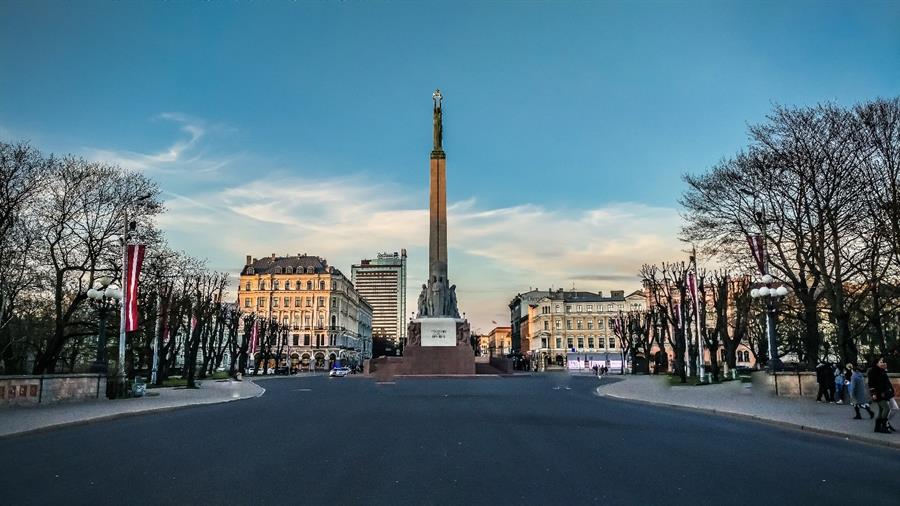
Monument of Freedom, Riga (Source: unsplash.com)
There you can also see Riga's Freedom Monument, which stands tall, serving as a poignant tribute to the brave soldiers who sacrificed their lives during the Latvian War of Independence from 1918 to 1920. It stands as an enduring symbol of Latvia's hard-fought freedom.
In 2025, Riga's city centre will be seamlessly connected to Europe through the eco-friendly Rail Baltic project, a game-changing high-speed rail network. This innovative initiative promises swift and sustainable travel, enhancing connections with European cities while prioritizing environmental responsibility.
5. Klusais Centrs (The Quiet Centre) - Art Nouveau mecca
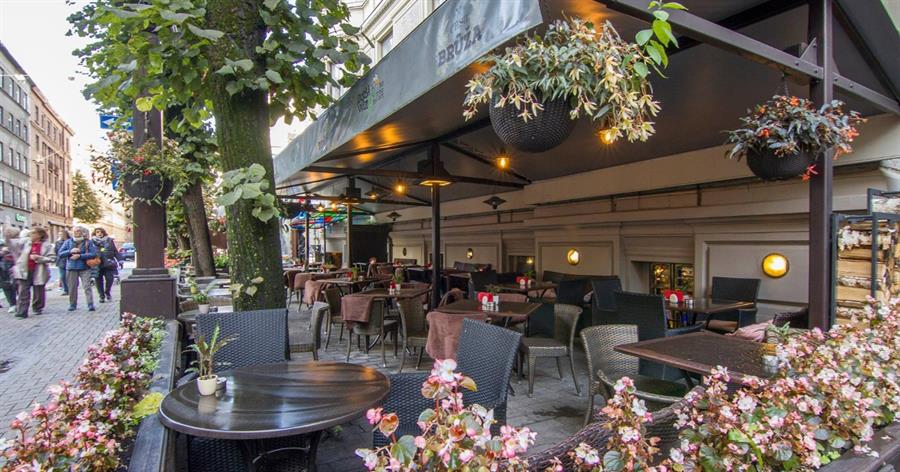
Cosy cafes in quiet Riga centre (Source: restoraniriga.lv)
The architecture of the Quiet Riga Centre will leave no one indifferent. This is an amazing place for morning walks and a great place to have your morning coffee and a croissant at one of the stylish cafes in the neighbourhood. Here it feels like you are outside of time and space.
Spread across 12 hectares, Kronvalda Parks is a marvel of landscape design, graced by a tranquil canal that splits it in two. It's perfect for running, jogging, cycling, or simply unwinding with friends. The park's diverse wildlife, artistic sculptures, and well-planned amenities make it one of the city's most appealing places to call home.
Most establishments here are bastions of culinary sophistication, boasting a portfolio that includes top-tier restaurants, cozy coffee shops, and refined wine tastings. Uniquely, this prestigious neighbourhood shuns the presence of bars. Klusais Centrs is well-known as a safe place for young families.
6. Tallinas Pagalms/Tallinas Kvartāls (Tallinn's Yard/Quarter) – Modern art, music, and street food place
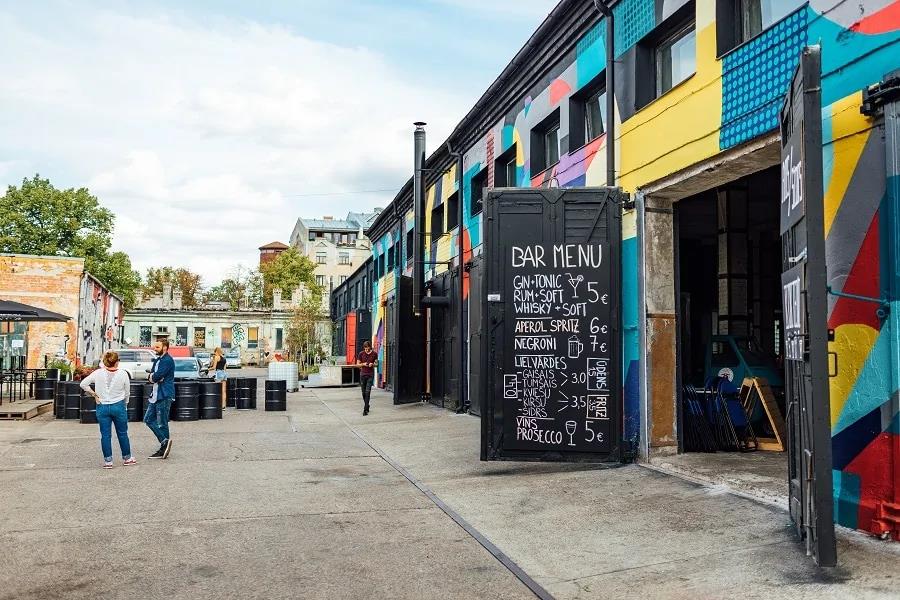
Friendly vibes of Tallinn's Quarter (Source: LiveRiga photo gallery)
Tallinas Pagalms or Kvartāls is an event venue and bar that opened its doors on May 25, 2018. It grew out of the Pagalms art and music festival in Sigulda.
This once-utilitarian industrial zone served as an ambulance car depot during the Soviet era. Today, it's experiencing a remarkable resurgence, thanks to the emergence of numerous bars and art venues that have breathed new life into the area.
Visit during the daylight hours to appreciate the vibrant street art and the intriguing ambiance of post-industrial decay. Alternatively, you can opt for a freshly brewed coffee at the Rocket Bean Roastery. However, for the most immersive experience, venture here in the evening or at night to savor a delectable array of cuisine, craft beer, and the lively nightlife of Tallinas Kvartāla Ezītis Miglā.
If your heart yearns for evening entertainment, drinks, and music, then every modern Riga resident will send you to Tallinas Pagalms. This place is a neighbourhood where you can go from one bar to another all night long and enjoy how diverse the bars, drinks and people who visit these places may be. Public recordings of podcasts, stand-up comedies, and disco events (including silent disco events) take place here.
7. Maskavas Forštate (Moscow District) – Mix of Cultural traditions
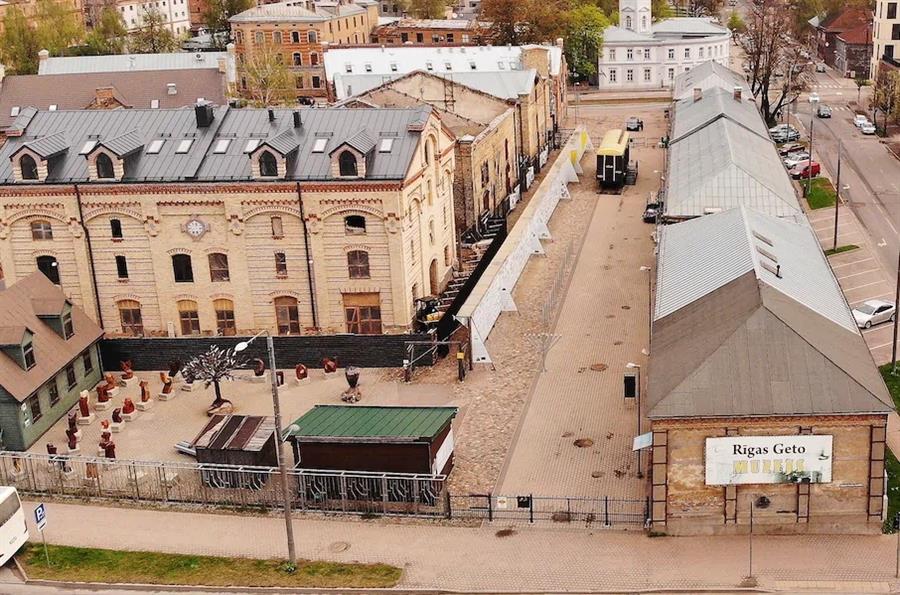
Moscow's district of Riga (Source: LiveRiga photo gallery)
Latgale, also known as Maskavas forštate is an intriguing area in Riga. This district, one of the oldest in Riga after the Old Town, has a history dating back to the 14th century.
Maskavas Forštate is a neighbourhood with a very interesting reputation, but in recent years, locals have increasingly begun to appreciate its historical importance. Maskavas Forštate is changing more and more every day. One of the favourite objects in Maskavas Forštate that locals really like is a huge sculpture of a fox that was created by animal rights activists. The Fox is in the creative Lastādija neighbourhood. Various events that are associated with the creative intelligentsia of Riga also take place here.
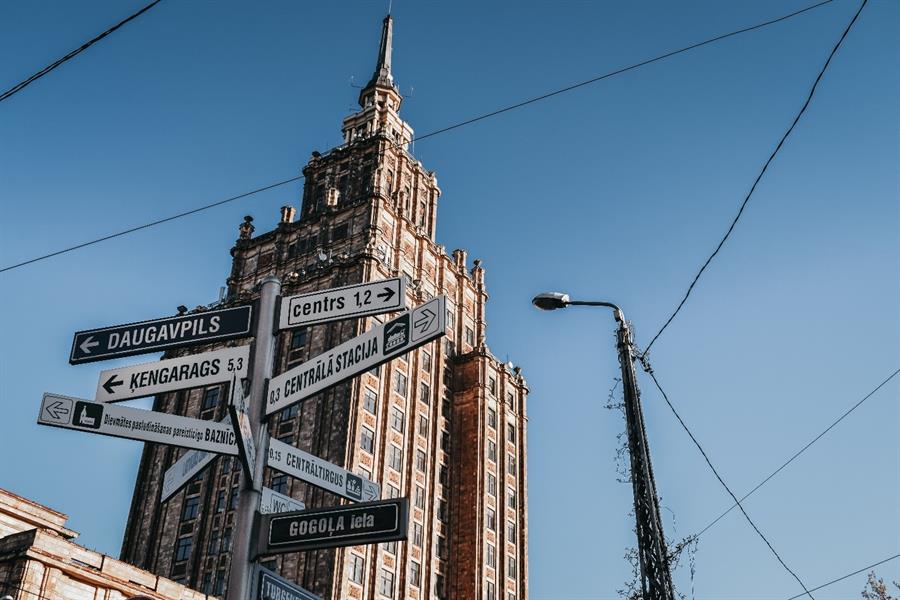
Academy of science, Riga (Source: unsplash.com)
There is a trendy warehouse district near Spīķēri, the central market, where you can enjoy cafes, shops, galleries, and a walk along the Daugava River. Latgale is also close to Old Riga, making it convenient to explore the former Jewish ghetto. Unfortunately, the Great Choral Synagogue no longer exists, leaving only ruins, a metal menorah, and a memorial stone that bear witness to World War II atrocities. The Old Jewish Cemetery has also suffered losses, as many headstones and bricks were removed by the Soviets after the war. On the Orthodox side, you'll find two beautiful Russian churches: the Grebenshchikov Church and the Orthodox Church of the Annunciation. Additionally, the largest wooden church in Latvia, the Riga Church of Jesus, is in the same district.
8. Mežaparks (Forest Park) – Harmony with nature
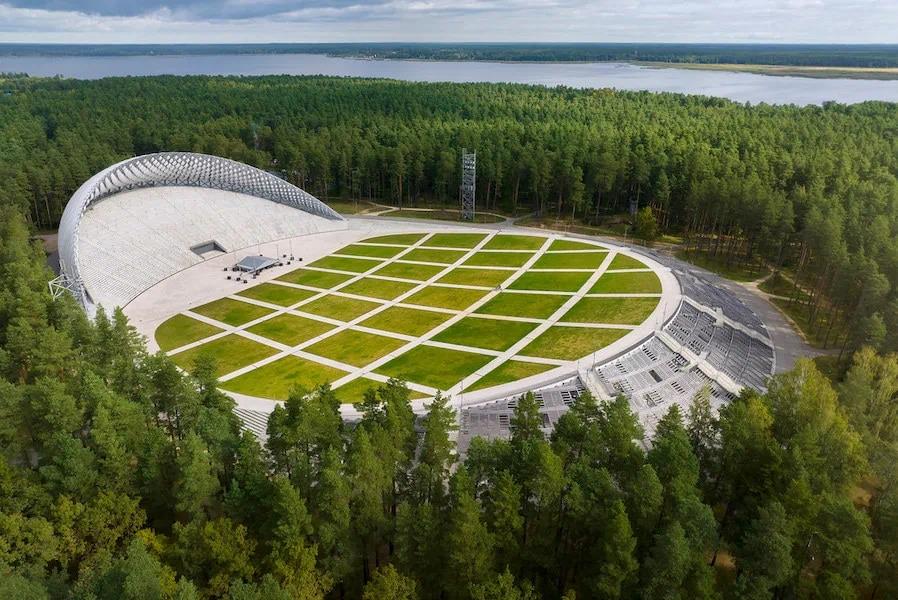
Great stage in Mežaparks (Source: LiveRiga photo gallery)
Around 1225, this area became part of Riga's forested lands. In the 17th century, it became known as Ķēniņu mežs ("King's Forest" in English), named after King Gustavus Adolphus of Sweden, who established a military camp here during the Polish–Swedish War in 1621. Recreational spots started emerging in the 18th century, with traveling animal circuses making appearances in the 19th century.
Mežaparks is one of the most prestigious neighbourhoods in Riga. Every resident of Riga dreams of living here because the air is saturated with freshness, and private houses delight passers-by, becoming an indispensable jewel of the neighbourhood. Here, the main stage of Latvia has recently been restored and opened to the public, where the biggest cultural event (the most important one in the life of any Latvian), the Latvian Song and Dance Festival, takes place!
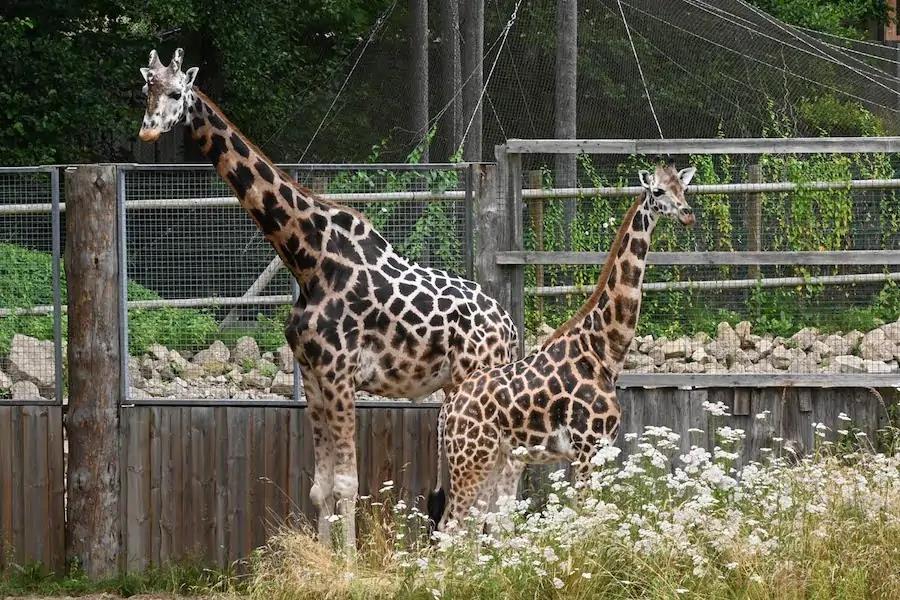
Giraffes in Riga's Zoo (Source: LiveRiga photo gallery)
Other gem is the Riga Zoo, a venerable institution that first opened its gates in 1912. It holds the distinction of being the oldest zoo in Northern Europe, where visitors can embark on a captivating journey through the animal kingdom.
You'll also discover Latvia's inaugural 18-hole golf course. This beautifully landscaped course offers avid golfers an opportunity to test their skills against lush fairways and challenging greens. Whether you're a seasoned pro or a newcomer to the sport, the golf course promises an enjoyable day outdoors, surrounded by the picturesque Latvian countryside.
9. Grīziņkalns (Griesen Hill) - Frightened workers' neighbourhood
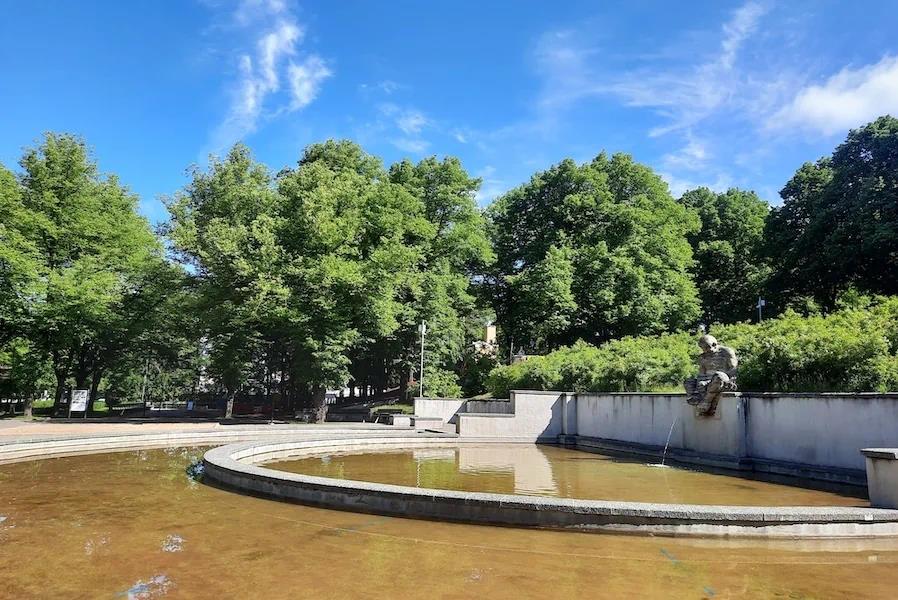
Grīziņkalns fountain (Source: LiveRiga photo gallery)
The neighborhood's name, Grīziņkalns, has historical roots tied to a Riga merchant named Griesen. In the late 19th century, the area saw the establishment of Pērnavas Street, the construction of factories and workshops, and the arrival of workers who settled in houses. The neighborhood earned its name due to one of the highest sand dunes, Grīziņkalns, standing 24 meters above sea level.
One of the most promising and rapidly developing neighbourhoods in Riga is Grīziņkalns. There are parks, cafes, and a huge park here where various sports events take place during the warm season. This park attracts a diverse range of visitors, including avid runners, families with young ones, and dog enthusiasts who make use of the designated dog-friendly zone. Adding to its historical significance, a statue within the park serves as a reminder of its past identity as Revolution Park of 1905.
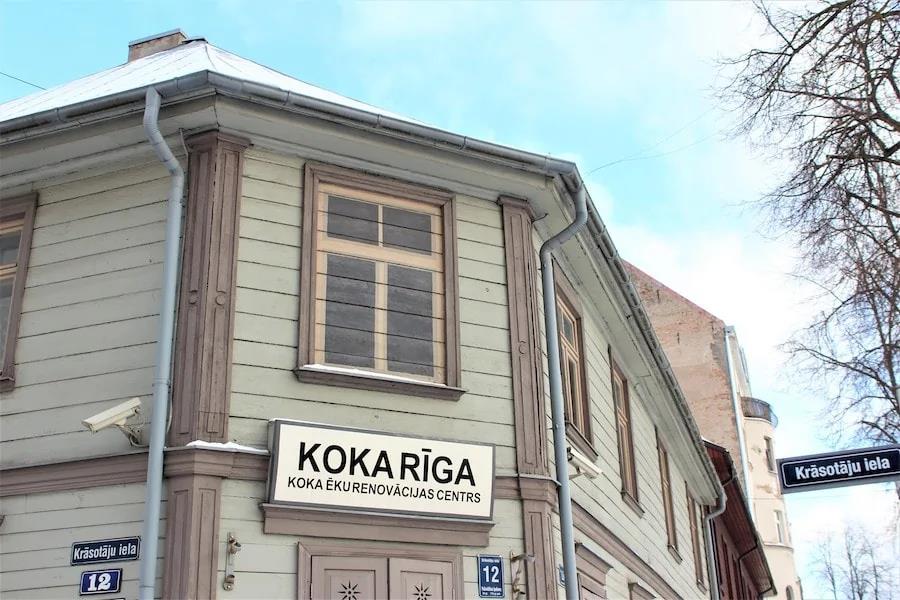
Wooden house in Grīziņkalns (Source: LiveRiga photo gallery)
Renowned for its distinctive wooden architecture, Grīziņkalns showcases a multitude of remarkable structures. Notably, the building at 12 Krāsotāju Street stands as an exceptional exemplar and serves as the esteemed residence of Koka Rīga, a renowned hub dedicated to the restoration and preservation of wooden buildings. In addition to its vital role, Koka Rīga frequently orchestrates engaging exhibitions, hands-on workshops, and various other captivating events, further contributing to Grīziņkalns' cultural vibrancy.
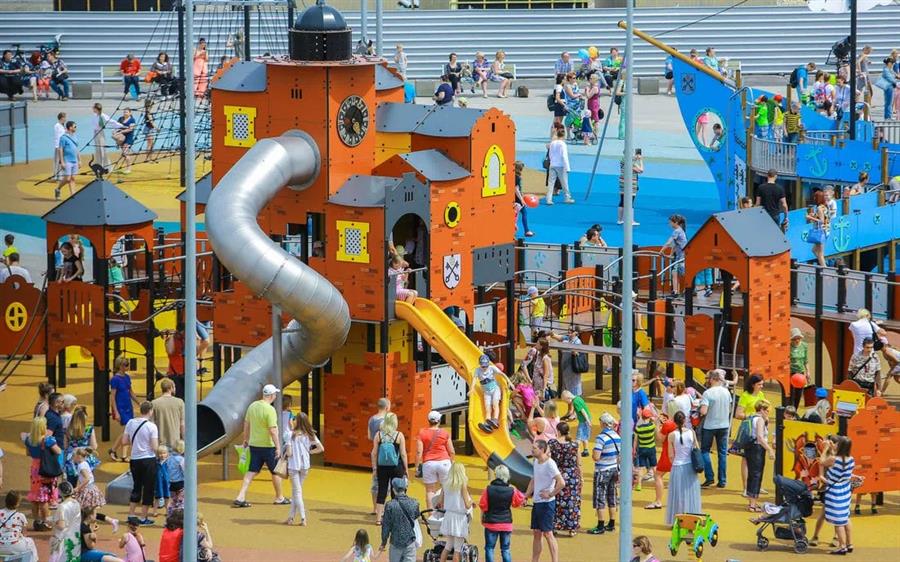
Popular playground on Kr.Barona street, Riga (Source: LiveRiga photo gallery)
While on your way from the City Center to Grīziņkalns, you'll come across the largest children's playground in Riga, which stands out with its unique and unconventional design. The composition of play structures here embodies the flavor and character of Riga – you'll find a blend of the old town's ambiance along with the tall towers of Pārdaugava. During the summer months, visitors to the playground can also enjoy refreshing moments under the water fountain, adding an extra layer of charm to this place. This park is suitable for both preschoolers and older children. Furthermore, within this neighborhood, you'll find an extensive skate park that attracts skateboarders and rollerbladers from all over the city.
10. Teika - One of the newest areas in Riga
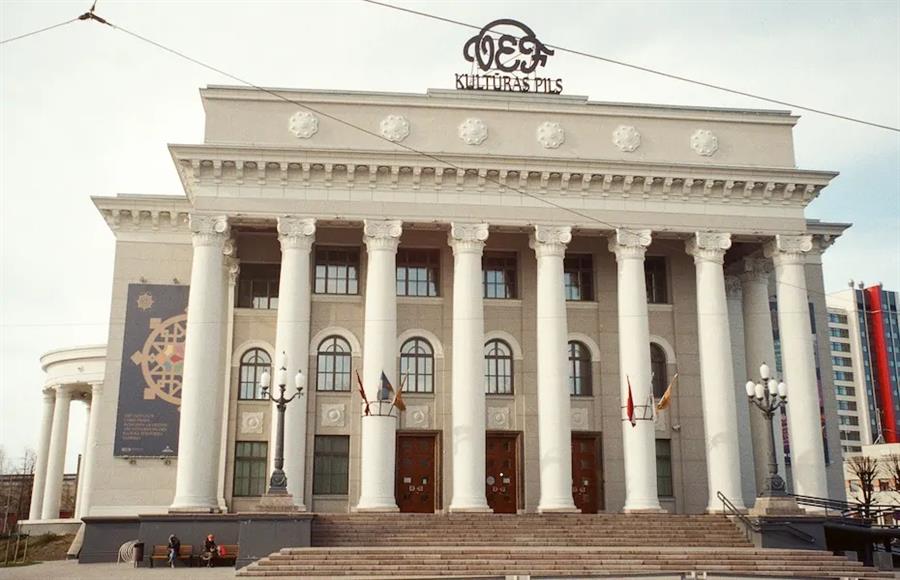
VEF palace of culture in Teika, Riga (Source: LiveRiga photo gallery)
Teika got its name in 1937 from the residential building of the same name - a cinema complex; it was built near Zemitāna Square in 1933 to a design by the outstanding Latvian functionalist architect T. Hermanovskis
The Teika historical local center, anchored by Zemitāna Square in its central core, exudes a unique charm. However, it's flanked by two colossal hubs that transcend the boundaries of Teika itself, redefining the neighbourhood’s landscape. To the southwest, the imposing Domina Shopping Center stands as a retail giant, straddling the border with Purvciems (other area of Riga). Meanwhile, in the northeastern reaches, the sprawling Akropole Alfa Shopping Park commands attention. Adding to this tapestry of urban dynamics, the VEF Palace of Culture in the northwest has become a distinctive focal point, catalysing both residential and commercial growth. Each of these centers contributes to the neighbourhood’s multifaceted character, making Teika a place where local life intertwines with broader urban dynamics in a truly exceptional way.
11. Brasa area - Attractive place to live in
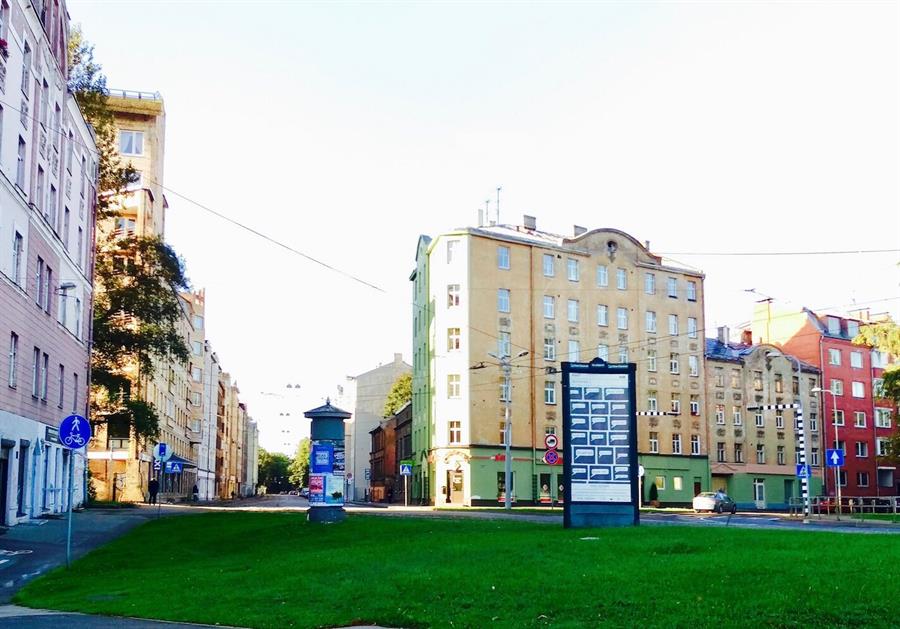
Brasa area, Riga (Source: Urban Treetops photo gallery)
The origin of the neighbourhood’s name can be attributed to its proximity to the Brasa train station.
Brasa is best known for its historic cemetery. Don’t let this scare you off, because these cemeteries have become charming historical parks, where Brasa residents take frequent strolls. Here you can enjoy the change of seasons to the fullest, as the nature of the parks delights visitors at any time of the year: here are the snowiest and whitest winters, the most golden autumns, the greenest summers, and the most romantic springs.
Brasa is transforming into one of the most fashionable places to reside in Riga. The Hospitāļu Street community celebration has become a cherished tradition, offering visitors an authentic insight into the neighborhood's pulsating energy. A must-visit spot in Brasa is the enchanting "Piena (Milk) Quarter," situated on the cusp of the neighborhood, where open-air concerts unfold during the summer, offering a delightful ambiance. Moreover, Miera Street boasts an array of inviting coffee shops, delectable restaurants, and trendy bars that are sure to captivate visitors.
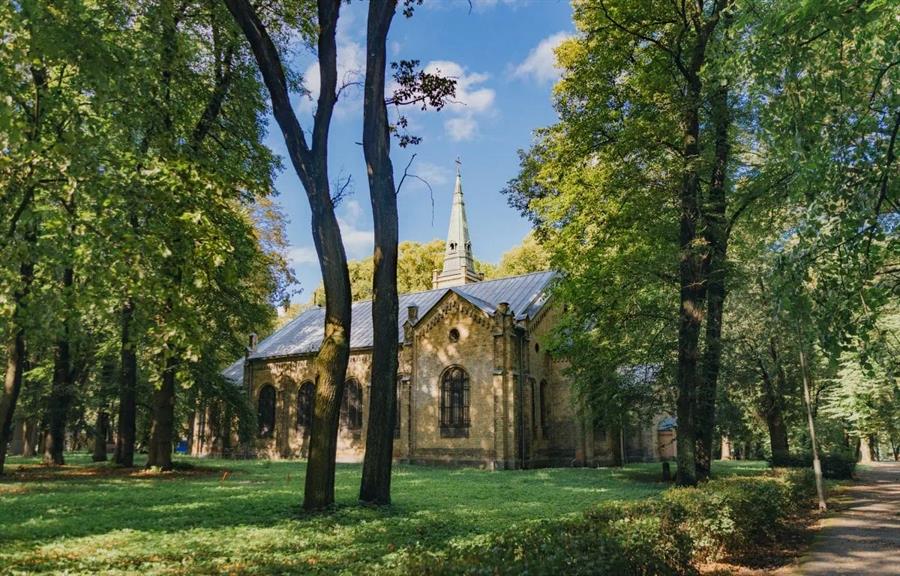
Brasa park and Great cemetery (Source: LiveRiga photo gallery)
"Lielie Kapi" (The Great Cemetery) has transformed into a serene Garden and Park Ensemble adorned with monuments, graces the surrounding area. Nestled within this district are an array of impeccably preserved pre-war residential buildings that exude timeless charm.
12. Skanste district – A Business Card for the Riga of the 21st Century
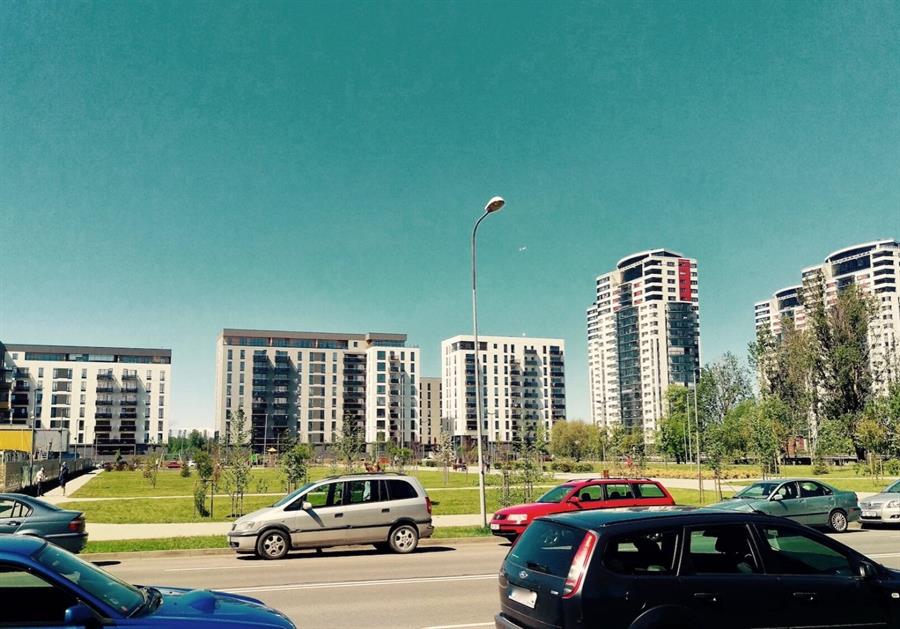
Skanste buildings, Riga (Source: Urban Treetops photo gallery)
The origin of the name Skanste is linked to the construction of an earthen fortification wall known as “skansts”. This defensive structure was commissioned by Sergeant Alexander Menshikov on the orders of Russian Czar Peter the Great. It was built in the vicinity of what we now know as Skanstes Street.
Skanste, a promising district in modern Riga, is undergoing a transformation. Just a short walk from Riga's center, Skanste offers a unique blend of striking architecture, green spaces, spacious offices, elegant homes, and vibrant entertainment and shopping districts. It's a place where bold dreams become reality.
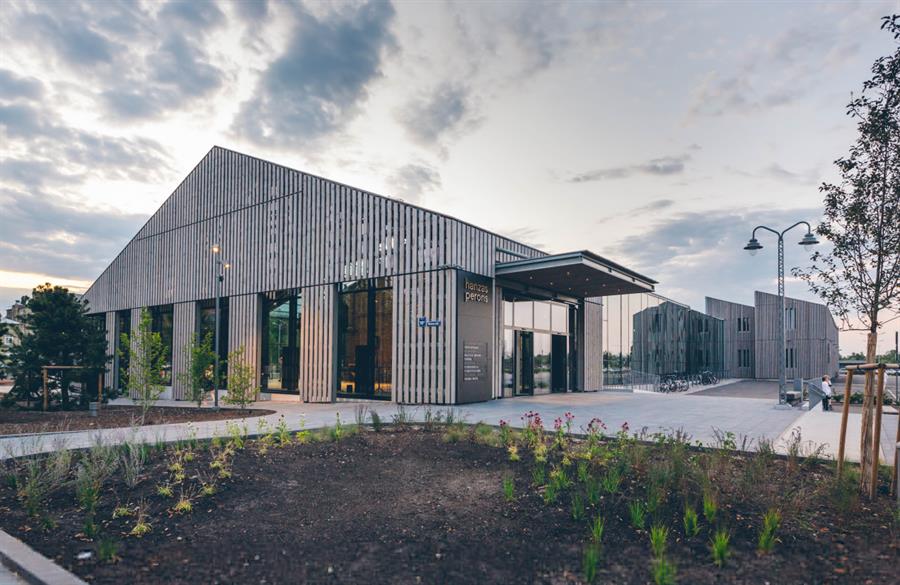
Venue "Hanzas Perons", Riga (Source: hanzasperons.lv)
Skanste already hosts the new headquarters of two leading Latvian banks and Arēna Rīga, a top venue for sports events and music concerts. For a dose of culture, make a stop at Hanzas Perons, a cultural and events space that hosts exhibitions, performances, and festivals.
13. Čiekurkalns (Pine cone's hill) – Former manufacturing powerhouse
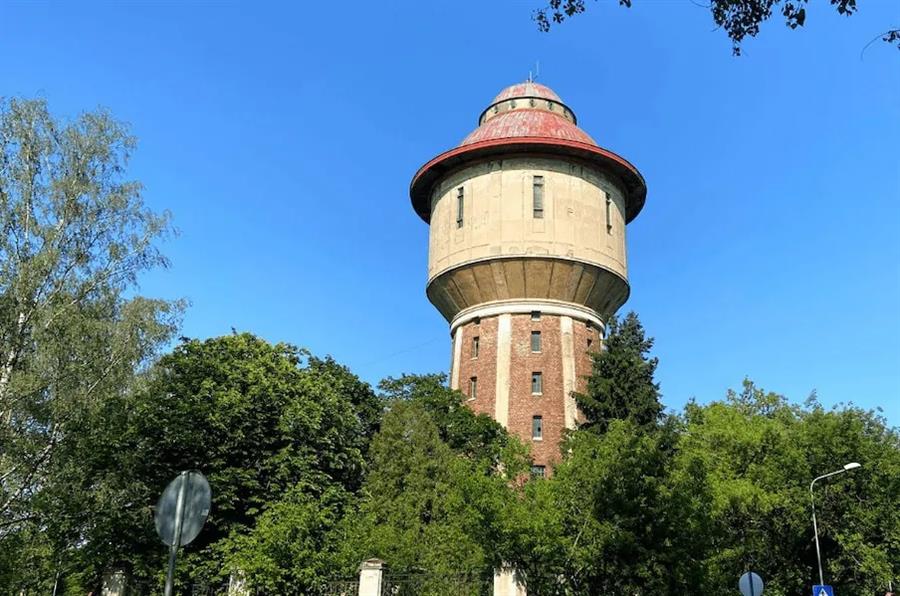
Water tower in Čiekurkalns, Riga (Source: LiveRiga photo gallery)
Čiekurkalns derives its name from the abundant pine trees adorned with cones that once graced its sandy hills. This neighborhood also donned a German name, "Schreyenbusch."
Dominating the skyline stands a majestic red brick edifice, a testament to architectural prowess. This imposing structure, which graced the cityscape in 1915, proudly holds the title of Riga's largest water tower. Its design is a splendid illustration of the late Art Nouveau style, adding a touch of timeless elegance to the city's architectural heritage.
Čiekurkalns preserves the essence of architectural variety woven into Riga's rich historical tapestry. The neighborhood's charm unfolds through the architectural styles, encompassing the quaint wooden workers' cottages, resilient post-war prefabricated structures, and the robust factory buildings that grace its eastern precincts.
Riga offers a blend of delightful experiences
- Start by exploring the historic Old Town with its charming streets and landmarks.
- Dive into the local culture by visiting art museums, galleries, and savouring Latvian cuisine at various restaurants.
- Don't miss the bustling Riga Central Market for a taste of local flavours and unique shopping.
- Enjoy the coastal beauty with a trip to Jurmala's sandy beach, just a short train ride away.
- Explore the city's green spaces like Bastejkalns Park and Mežaparks for relaxation.
- Marvel at the captivating Art Nouveau architecture, especially in the Alberta Street area.
- As the night falls, immerse yourself in Riga's lively nightlife scene, with numerous bars, clubs, and music venues.
- For a taste of Latvian folklore, attend a traditional folk music or dance performance.
- Get panoramic views of the city from the Riga TV Tower or the Skyline Bar at Radisson Blu Hotel.
- Consider day trips to historical sites like Sigulda and Cēsis to explore medieval castles and picturesque landscapes.
- Lastly, don't forget to explore Riga's vibrant street art scene, which adds a modern twist to the city's visual landscape.
